#Gothic Fiction
Explore tagged Tumblr posts
Text
19th Century Vampire Lit I'm Gonna Read
Because I've lost my mind.
Most of these texts were found with the aid of these two posts. I did not include any of the stories listed as "not technically about vampires," except for "Let Loose," because it concerns a specter seeking blood, and "Vampirismus," because it's called "Vampirismus."
A strikethrough indicates that I've already read the work. Bold text indicates that I cannot find an English translation, whether online or for purchase. If you know of English translations of any bolded titles, please let me know.
Thalaba the Destroyer, Robert Southey (1801)
"The Vampire," John Stagg (1810)
The Giaour, Lord Byron (1813)
"A Fragment of a Novel," Lord Byron (1816)
"The Vampyre," John William Polidori (1819)
The Black Vampyre, Uriah Derick D'Arcy (1819)
The Vampire Lord Ruthwen, Cyprien Bérard (1820)
The Vampire, or The Bride of the Isles, J.R. Planché (1820)
The Vampire, Charles Nodier (1820)
"Vampirismus," E.T.A. Hoffman (1821)
Smarra, or Demons of the Night, Charles Nodier (1821)
"Wake Not the Dead," Ernst Raupach (1823)
The Vampire, or the Hungarian Virgin, Étienne-Léon de Lamothe-Langon (1825)
Der Vampyre und seine Braut, Karl Spindler (1826)
La Guzla, ou Choix de Poesies Illyrique, Prosper Merimee (1827)
"Pepopukin in Corsica," Arthur Young (1827)
The Vampire, Heinrich Masrschner and Wilhelm August Wohlbrück (1828)
The Skeleton Count, or the Vampire Mistress, Elizabeth Caroline Grey (1828)
Der Vampyre, oder die Totenbraut, Theodor Hildebrand (1828)
The Vampire Bride, Henry Thomas Liddell (1833)
Clarimonde, Théophile Gautier (1836)
The Family of the Vourdalak, Aleksey Tolstoy (1839)
The Vampire, Aleksey Tolstoy (1841)
"The Vampire," James Clerk Maxwell (1845)
Varney the Vampire, or The Feast of Blood, James Macolm Rymer (1845-1847)
The Pale Lady/The Carpathian Mountains/The Vampire of the Carpathian Mountains, Alexandre Dumas (1849)
"The Vampyre," Elizabeth F. Ellet (1849)
The Phantom World [select chapters], Augustin Calmet (1850)
The Vampire, Alexandre Dumas (1851)
The Vampires of London, Angelo de Sorr (1852)
The Dead Baroness/The Vampire and the Devil's Son, Pierre Alexis Ponson du Terrail (1852)
"The Vampire," Charles Pierre Baudelaire (1857)
Knightshade/The Shadow Knight, Paul Féval (1860)
"The Mysterious Stranger," Karl von Wachsmann (1860)
"Metamorphosis of a Vampire," Charles Pierre Baudelaire (1860)
The Vampire of the Val-de-Grace, Leon Gozlan (1861)
"The Vampire; Or, Pedro Pacheco and the Bruxa," William H.G. Kingston (1863)
The Vampire/The Vampire Countess, Paul Féval (1865)
Vampire City, Paul Féval (1867)
"The Last Lords of Gardonal," William Gilbert (1867)
Vikram and the Vampire, Sir Richard Francis Burton (1871)
"The Vampire Cat of Nabéshima," Algernon Bertram Freeman-Mitford (1871)
Carmilla, Joseph Sheridan Le Fanu (1872)
"Ghosts," Mihai Eminescu (1876)
Der Vampyr – Novelle aus Bulgarien, Hans Wachenhusen (1878)
Captain Vampire, Marie Nizet (1879)
"The Fate of Madame Cabanel," Eliza Lynn Linton (1880)
After Ninety Years, Milovan Glišic (1880)
"The Vampyre," Owen Meredith (1882)
"The Vampire," Jan Naruda (1884)
"Manor," Karl Heinrich Ulrichs (1884)
"The Vampyre," Vasile Alecsandri (1886)
The Horla, Guy de Maupassant (1887)
"Ken's Mystery/The Grave of Ethelind Fionguala," Julian Hawthorne (1887)
"A Mystery of the Campagna," Anne Crawford (1887)
"Romanian Deaths and Burials-Vampires and Werewolves," Emily Gerard (1888)
"The Old Portrait," Hume Nisbet (1890)
"The Vampire Maid," Hume Nisbet (1890)
"Let Loose," Mary Cholmondeley (1890)
"The Castle of the Carpathians," Jules Verne (1892)
"The Vampire," Felix Dahn (1892)
"The Parasite," Sir Arthur Conan Doyle (1884)
"The True Story of a Vampire/The Sad Story of a Vampire," Count Eric Stenbock (1894)
"A Kiss of Judas," Julian Osgood Field (1894)
Lilith, George MacDonald (1894)
"The Prayer," Violet Hunt (1895)
"Good Lady Duncayne," Mary Elizabeth Braddon (1896)
"The Vampire of Croglin Grange," Augustus Hare (1896)
"Phorfor," Matthew Phipps Shiel (1896)
Dracula, Bram Stoker (1897)
"Dracula's Guest," Bram Stoker (1914*)
The Blood of the Vampire, Florence Marryat (1897)
*"Dracula's Guest" was first published in 1914 but was written either concurrent to or before the writing of Dracula.
I'm going to be honest. When I began, I thought there were four nineteenth century vampire stories. Five if you count Dracula's Guest. I've made a huge mistake.
#vampires#vampire fiction#vampire literature#19th century fiction#19th century literature#Gothic fiction
46 notes
·
View notes
Text
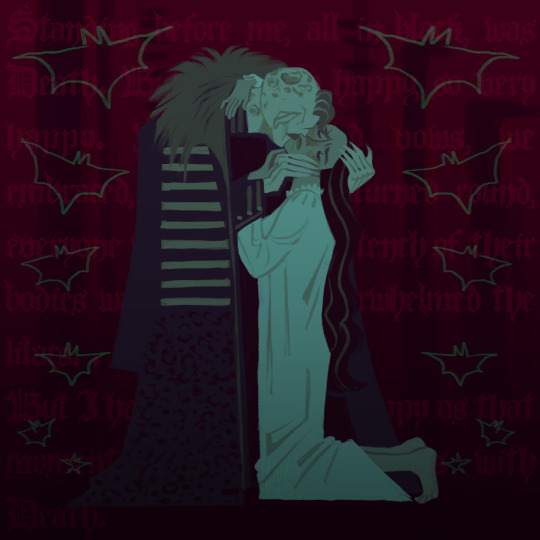
🪻🦇🪦 the kiss of death.

guess who saw nosferatu a couple days ago. ME!!!!!! i cannot understate how freaking good this movie was. like, honest to god, i have so many thoughts regarding it.
fantastic performances, fantastic shots, fantastic vibe, fantastic everything. honestly disturbed me at some points which is a FEAT! for me.
anyways i wanted to do this before anyone else did mr klimt thank you for existing so i can reference your artwork
closeup beneath the cut

#art#artists on tumblr#my art#nosferatu#nosferatu 2024#robert eggers#nosferatu movie#count orlok#ellen hutter#gothic horror#gothic fiction
3K notes
·
View notes
Text

#i will never not be bitter about this#also if you love IWTV and haven't seen this check it out#crimson peak#guillermo del toro#gothic fiction#gothic romance
3K notes
·
View notes
Text

My roommate sent this to me and I have never felt more seen
#my chemical romance#mcr#emo#gerard way#frank iero#ray toro#mikey way#mcrmy#mcr tumblr#nosferatu#gothic literature#goth lit#gothic fiction#gothic#lily rose depp
1K notes
·
View notes
Text
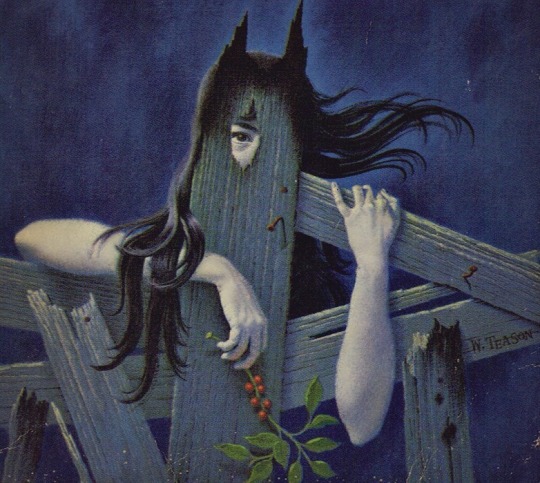
Cover art for the paperback edition of Shirley Jackson's "We Have Always Lived in the Castle" - by William Teason
#we have always lived in the castle#shirley jackson#merricat blackwood#gothic#literature#illustration#illustrations#art#vintage paperbacks#gothic aesthetic#gothic fiction#horror girls#cover art#my posts
8K notes
·
View notes
Text
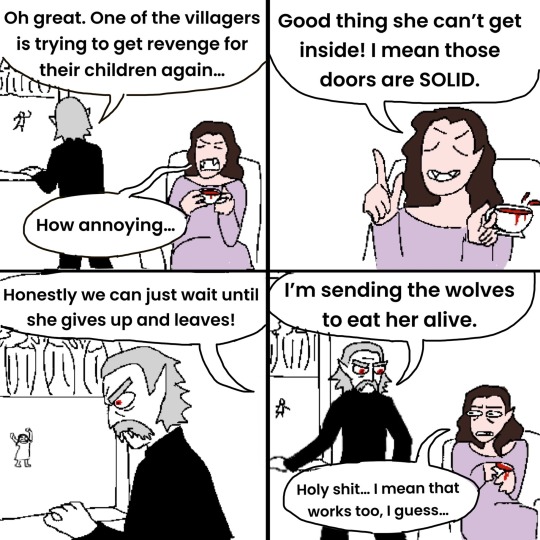
what is wrong with this guy.
#dracula#dracula daily#re dracula#classic books#comic#comics#webcomic#dracula art#vampire#vampires#bookblr#gothic fiction#classic lit#books and reading#count dracula#artists on tumblr
743 notes
·
View notes
Text
The many uses of a Byronic Hero
chair ( Jane & Edward - Jane Eyre)
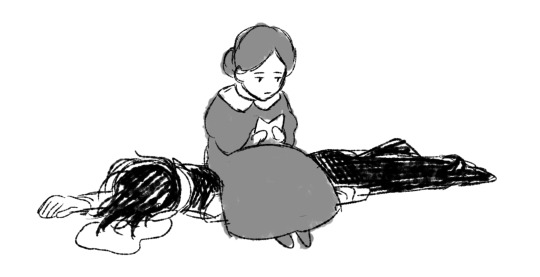
Pillow ( Christine & Erik - Phantom of the Opera)
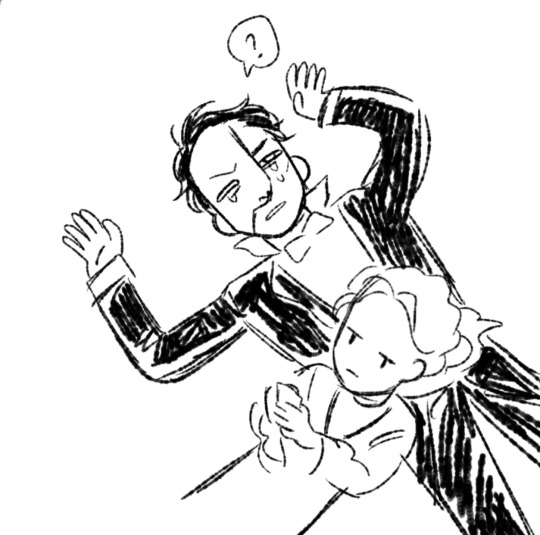
Car ( Catherine & Heathcliff - Wuthering Heights)

Water dispenser ( Edith & Thomas - Crimson Peak)
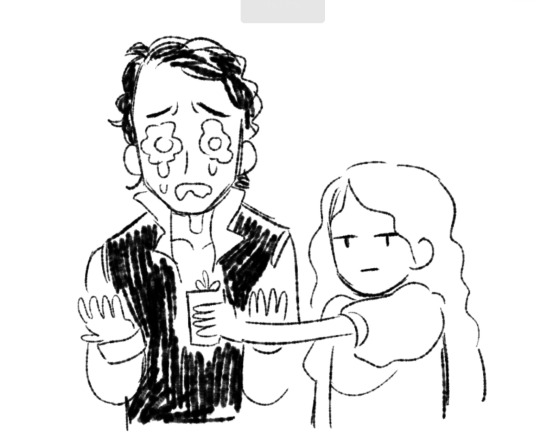
#jane eyre#mr rochester#edward rochester#charlotte bronte#classic litterature#gothic romance#crimson peak#gothic fiction#victorian gothic#wuthering heights#heathcliff wuthering heights#Phantom of the opera#Thomas Sharpe#edith cushing#erik the phantom#erik destler#byronic hero
3K notes
·
View notes
Text






Nosferatu. Dir. Robbert Eggers (2024).
#all the romanians cheered (me)#does evil come from within us or beyond#i am an appetite nothing more#moodboard#aesthetic#nosferatu#nosferatu 2024#bill skarsgård#lily rose depp#willem dafoe#aaron taylor johnson#count orlok#ellen hutter#films#horror#horror films#horror film moodboard#horror moodboard#film moodboard#movie moodboard#films of 2024#2024 films#robbert eggers#gothic film#gothic fiction
229 notes
·
View notes
Text
Random thought, but I think it's funny how "vampires vs werewolves" is such a big trope, considering that the most iconic vampire of all time IS a werewolf.
"You mean Dracula?"
Yes I mean Dracula. Dracula is a werewolf, straight up. In Bram Stoker's novel, Dracula transforms into a wolf multiple times. He also transforms into a bat and a cloud of fog. He actually transforms into a wolf more often than anything else, with Dracula turning into a bat only once and turning into a large bat-like creature on another occasion.
"But he's not a real werewolf! He doesn't transform under the moon!"
Wrong again! Lycanthropes and folkloric wolf shape-shifters go all the way back to the myth of King Lycaon, first recorded in the 2nd Century BC. Werewolves specifically (and the term "werewolf") go back at least as far as the 11th Century AD, originating from the Old German word "Werwolf". The first depictions of werewolves transforming under moonlight aren't actually from folklore, but movies. The first werewolf to transform under moonlight was from the film "Werewolf of London" (1935), though it wasn't necessarily under the full moon, with even simulated moonlight from a lamp triggering the transformation. The first depiction of a full moon causing werewolf transformations was in "Wolf Man" (1941), released 44 years after Bram Stoker's Dracula was published.
So Dracula is a werewolf. A true, blue, motherfucking werewolf. Other folkloric vampires that pre-date the Dracula novel were also described as having the ability to transform into wolves, or even abnormally large wolf-like dogs.
Your werewolf/vampire hybrid OC is nothing new. Countless OG Vampires WERE werewolves. Witch/Werewolf hybrids are even older than that. It's tradition. A forgotten tradition but a tradition nonetheless, you're just continuing it without even realizing that it's a tale as old as time.
198 notes
·
View notes
Text

Dracula author Bram Stoker's long lost ghost story Gibbet Hill has been found in an 1890 Christmas supplement of a Dublin newspaper!
https://www.bbc.com/news/articles/c4g9119l64qo
~Kambriel
[Kambriel.com ~ Etsy ~ Bluesky~ Twitter ~ Tumblr ~ Dreamwidth ~ Facebook ~ Instagram]
#Gothic#Literature#Dracula#Bram Stoker#Gibbet Hill#Ghost Story#Haunted#Gothic Fiction#ghosts#Victorian#Gothic Victorian#Vampire
298 notes
·
View notes
Text
Because I am a masochist, I decided I wanted to read all the 19th century vampire literature. Currently I'm focusing on short stories and novels rather than plays.
I have read:
The Vampyre - John William Polidori
Varney the Vampire, or The Feast of Blood - James Malcolm Rymer
Dracula - Bram Stoker
Dracula's Guest - Bram Stoker
I have not yet read:
Fragment of Novel - Lord Byron
The Black Vampyre - Uriah Derick D'Arcy
Lord Ruthwen; ou, Les Vampires/Lord Ruthwen of the Vampires - Charles Nodier
Vampirismus - E.T.A. Hoffman
La Morte Amoureuse/Clarimonde - Théophile Gautier
The Vampyre - Elizabeth F. Ellet
Spiritual Vampirism - Charles Wilkins Webber
Le Chevalier Ténèbre/Knightshade - Paul Féval
La Vampire/The Vampire Countess - Paul Féval
La Ville Vampire/Vampire City - Paul Féval
Carmilla - J. Sheridan Le Fanu
Strange Event in the Life of Schalken the Painter - J. Sheridan Le Fanu
The Fate of Madame Cabanel - Eliza Lynn Linton
Ninety Years Later - Milovan Glišić
Manor - Karl Heinrich Ulrichs
A Mystery of the Campagna - Anne Crawford
Let Loose - Mary Cholmondeley
Le Captine Vampire/Captain Vampire - Marie Nizet
The True Story of a Vampire - Eric Stenbock
The Vampire - Alexei Tolstoy
The Family of the Vourdalak - Alexei Tolstoy
The Reunion After Three Hundred Years - Alexei Tolstoy
The Prayer - Violet Hunt
The Blood of the Vampire - Florence Marryat
The Vampire of the Val-de-Grace - Léon Gozlan
The Vampire and the Devil's Son - Pierre Alexis Ponson du Terrail
Wake Not the Dead - Ernest Rapauch
The Vampire of the Carpathian Mountains - Alexandre Dumas
The Pale Lady by Alexandre Dumas
Pepopukin in Corsica - Arthur Young
Good Lady Duncayne - Mary Elizabeth Braddon
Luella Miller - Mary E. Wilkins Freeman
The Skeleton Count, or The Vampire Mistress - Elizabeth Caroline Grey
The Virgin Vampire - Étienne-Léon de Lamothe-Langon
The Phantom World - A.A. Calmet
Death and Burial: Vampires and Werewolves - Emily Gerard
And the Creature Came In - Augustus Hare
The Tomb of Sarah - F.G. Loring
And then there is this book which I don't even know if I can read, because I've yet to find an English translation and don't know if it even has one:
Der Vampyr – Novelle aus Bulgarien - Hans Wachenhusen
Are there any others I'm missing? Are any of those not actually vampire stories or not from the nineteenth century and I've been misled?
As to why the nineteenth century: I think if I tried to read all vampire stories EVER it would take the entire rest of my life and then some, and also early vampires are fascinating to me because all the standard tropes were not yet in effect.
As to why I'm doing this at all: Who even knows. I need things to distract my brain.
22 notes
·
View notes
Text








"Even in the grave, all is not lost"
- Edgar Allan Poe
#dark academia#dark acadamia aesthetic#aesthetic#dark academism#books#light academia#dark academia aesthetic#literature#romanticism#moodboard#dark academia aesthetics#dark academia moodboard#light academia moodboard#moodboards aesthetic#gothic fiction#gothic literature#gothic academia#edgar allan poe#poetry#dark academia literature#lit#gothic horror#english literature#dark academia books
278 notes
·
View notes
Text
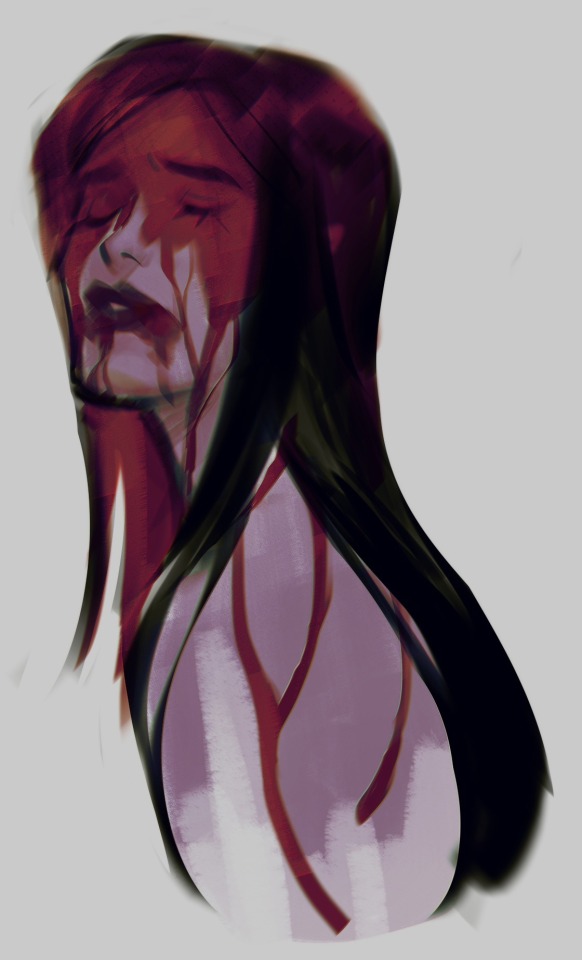
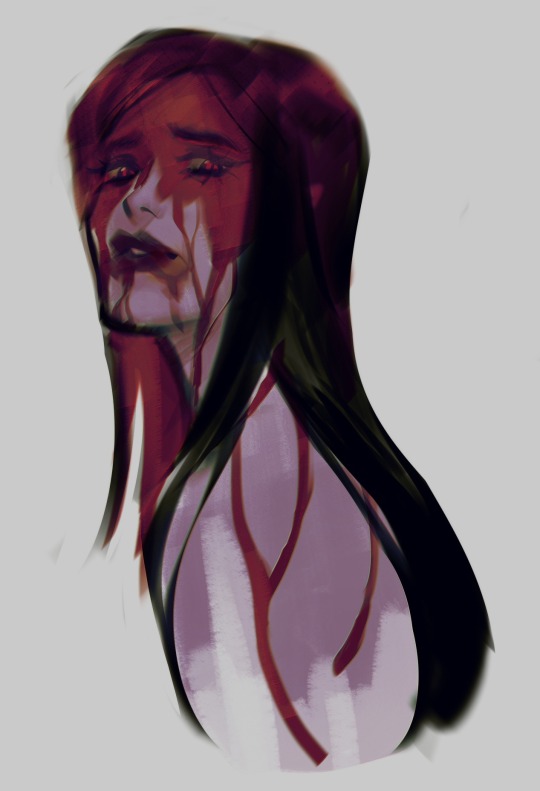
"My soul, once devoted to the light, now serves the darkness. I am a creature of shadow, forged in the blood of the night. The warmth of life has been replaced by a cold hunger, and though I long for the peace of my former existence, I am bound to the eternal dance of predator and prey. Yet, in the stillness of the night, I can hear the whispers of my past, a mournful dirge of what was lost and can never be regained. And do you know what terrifies me the most? I like this feeling…"
#painting#art#artwork#art tag#artist on tumblr#artists on tumblr#vampire#vampire art#vampire the masquerade#oc#oc art#digital art#digital illustration#digital drawing#original character#my art#drawing#illustration#sketch#vampire girl#vampire core#vampirism#writing#writers on tumblr#Carmilla#carmilla#gothic#gothic fiction#vtm#vtm oc
318 notes
·
View notes
Text
Blurred Lines: Agency and Victimhood in Gothic Horror
Seeing as Robert Eggers' Nosferatu has just breached a cool $135M at the worldwide box office, it might be as good a time to talk about this as any. I believe I echo the sentiments of most diehard fans of gothic horror when I say this: while we are glad to see this masterpiece meet with well-deserved success, these numbers also mean that a significant proportion of its audience has been previously unfamiliar with the hallmarks of our beloved genre; and the resulting disconnect between the viewers and the source material has been the driving force behind the great majority of the online discourse that surrounds it.
The tools and conventions of the gothic, as a genre, are essential to Nosferatu's primary narrative arc. Its central character, Ellen Hutter, cannot be discussed outside of her literary context. Textually, she balances between heroine and damsel in distress - blurred, in many ways, from mainstream understanding.
That is done entirely on purpose. There are numerous reasons for it; I could go into heavy detail about it; and I will - under the cut, of course.
The main thing I must make absolutely clear (before delving any deeper) is that the gothic genre is fundamentally non-literal. It deals heavily in metaphor, allegory, allusion, obfuscation - and, indeed, the blurred lines that have recently caused so much controversy online. This is by design. It is not a flaw of storytelling or interpretation. The gothic affronts the rigid, black-and-white, mainstream forms of morality because that is what it has always been designed to do; and the newer installments like Nosferatu do the same, being built upon those traditional foundations.
The historical background is therefore essential to the understanding of a gothic narrative. In this, the film does provide the viewer with a relatively easy starting point; its period setting amplifies its connection to its predecessors, as well as the societal pressures and systemic violence that it aims to challenge. It allows the audience to perceive the story through a historical lens that comes pre-installed, as a sort of short-cut to the genre's original social context.

The context, in this case, consists of misogyny, queerphobia, xenophobia, and ableism - which, while rampant even in the modern day, were that much more blatant in 1830s German Confederation, where/when the story largely takes place. Every human character, regardless of who they are, is influenced by these oppressive aspects of their society; and Ellen Hutter is hopelessly entrapped within all four.
Her social situation, as we are given to understand, is precarious. Though she was originally born into wealth, she married down to escape her abusive father. She is an eccentric - her "wild" inclinations (such as having a sense of dignity or loving the outdoors as a child) are enough to cause almost vitriolic disapproval; but on top of that, she was born with a psychic gift, which manifests in a way that is not dissimilar from a mental (and sometimes physical) disability. She and her husband are also English immigrants, and thus perpetual outsiders in Wisborg (this is also one of the reasons Thomas is so anxious to prove himself at Knock's firm, and so keen to emulate Harding in all things); and, finally, she implied to experience queer attraction - which, though non-explicit, repressed, and never truly indulged, still affects her and the way she is continuously treated throughout the film.
Overall, Ellen's existence is perceived, at best, as an inconvenience - and at worst, a scandal. With that, she fits seamlessly into her story's genre.
The "immoral," the forbidden, the taboo is a cornerstone of all gothic fiction. It exists in the doubt between light and dark, harm and desire, love and abuse. It is the domain of sympathetic villains (e.g. Heathcliff, Wuthering Heights), of imperfect victims (Bertha Mason, Jane Eyre), of heroes who are deeply flawed, who cause their own tragedies, and often fail to save anyone at all (Victor Frankenstein, Frankenstein). Within the gothic genre, there are no absolutes; and its contradicting balance of dichotomies provides a reference point - or, more accurately, a cultural triangulation - for exploring the same complexities that a binary puritanical mindset strives to eradicate. These include sexual desire, female autonomy, physical and mental disabilities, classism; in short, anything that gets people wincing.
The popular discussion of these topics is frequently cruel, often avoidant, and rarely straightforward or productive. As stated above, it makes people uncomfortable. It's not pleasant. However, for Ellen (and many people in the real world), it is, quite literally, impossible to avoid. It defines every aspect of her daily life.
What this means for her and for the story is that within a narrative that refuses to gloss over the imperfections of her surrounding society, her victimhood is not thrust upon her by a shadowy figure, emerging from the night. Instead, she is a victim - of an ongoing and systemic, rather than individual, abuse.
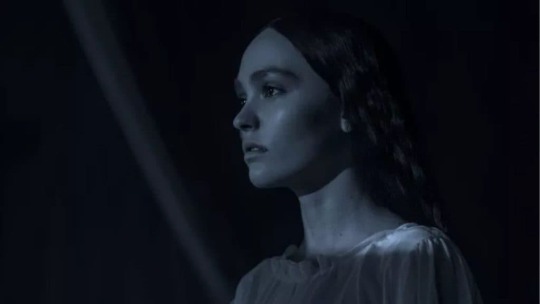
This aspect of Ellen's characterization lies at the core of her behaviour throughout the film. She is an unstable chimera of Brontë's Jane Eyre and Bertha Mason - in the sense that her actions are informed, in great part, by her acute awareness of her own disenfranchisement. She alternates between anguished raving and phlegmatic practicality, used to her pain but unable to entirely ignore it; and, the same way that Jane sees all the rage she feels (but cannot afford to express) manifested in Bertha, Ellen finds her counterpart in Orlok.
This is where the ambiguity begins.
Even though Orlok is most certainly a gothic villain, his relationship with Ellen cannot be interpreted as strictly adversarial. Naturally, it would be easy to ascribe their dynamic to grooming and PTSD; however, as previously mentioned, a gothic narrative is never surface-level - and the film itself never furnishes any information that would definitively limit it to that.
Firstly, to get the primary discourse point out of the way - yes, when Ellen and Orlok first meet within the ether, she is indeed young; and later, she is said to have been a child. However, at the time, the term "teenager"did not yet exist; Ellen's younger self is not portrayed by a child actress; and later, in 1838, she is referred to as a child multiple times - despite being an adult, married woman. Overall, within the film, the term is more often used to describe innocence and inexperience, rather than age; and her initial age is never specified. Granted, a multi-century age gap is not exactly "healthy" anyway - but this is a vampire story. It is per the course; and it complicates their relationship beyond a simple victim vs abuser narrative.
Secondly - and perhaps, most importantly - the overall impact of Orlok's coercion tactics falls flat in comparison to Ellen's human-world alternatives. Yes, he argues and threatens; but her social circumstances have never allowed her agency in the first place. Her father abuses, isolates, and threatens to institutionalize her; Thomas dismisses her concerns as "childish fantasies"; Harding and Sievers tie her down and drug her; Harding again kicks her out of the house. Her marriage, her friendships, are therefore all transactional; they grant her an escape from her father's house, relative financial stability, social support - on the condition that she represses her true self, pretends to be normal, doesn't threaten anyone's masculinity or heterosexuality, and acts like she's happy to be a deferring, obedient, settled wife. Being a daughter of a landed gentleman, she would never have been given a working woman's education, and evidently has no income of her own; and so, she has no options except to upkeep her end of the bargain - which means that her continued survival within mainstream society relies on constant background coercion.
Compared to this mundane, socially acceptable horror of her existence, the vampire actually offers her more autonomy than she is ever otherwise accorded. The terms of his covenant never threaten Ellen's own well-being; so on one hand, she has benevolence - and on the other, the dignity of choice.

This contrast lies at the heart of her dilemma. Ellen is torn between what she believes she should be and what she knows - and Orlok knows - she is.
One is "correct," moral, Good; the other is "wrong," sinful, Evil. However, at the same time, the first is manufactured; it is artificially designed, and must be continuously enforced. The second is primal. Natural. In accordance with gothic tradition, the appeal of Orlok is that he is forbidden, yet instinctive. By design, he is a reflection of everything that Ellen is forced to repress on a daily basis. That includes her rage, her ostracism, her abnormalities; but also, her desperate need to be respected, understood, and desired. He is both grotesque and alluring, both a lord and a beast, both cruel and reverent.
"He is my melancholy!.." cries Ellen.
"I am Heathcliff!" whispers Cathy.
Still, while Cathy and Heathcliff are primarily divided by class and racism, Orlok and Ellen are separated by moral considerations. In the explicit sense, Ellen cannot choose the Evil that Orlok represents. Within the surface narrative, she is obligated by her society, her morals, and the story to choose Good - in this case, by nobly sacrificing her individual expendable life to save her husband and a city full of people. Her primary storyline, like everything else, has already been decided for her.
For the Trekkies among us, this is Ellen's own Kobayashi Maru. A no-win scenario. As such, within the context of character analysis, her destination does not matter as much as the little things she does along the way; and it is no accident that, as the film progresses, the subtler, seemingly insignificant choices she makes within that framework just happen to bring her closer - and closer - to Orlok.

All of them are just innocuous enough to almost pass. She places a lock of perfumed hair in a locket that she gives to Thomas - and upon his arrival to the Carpathians, the same locket is immediately claimed by Orlok, who recognizes the scent of lilacs. Before making her sacrifice, she puts on her wedding dress and finds a bouquet of the same flowers - which is the sort of effort she didn't have to perform, especially given that he cannot resist her blood regardless. When Orlok arrives, she chooses to undress them both, and leads him to the bed, even though her previous sex scene with Thomas was entirely clothed; and in the morning, she pulls him close and holds him through the sunrise - even though he was already dying, and would not be able to escape. There was no need for her to touch his rotting flesh at that point, much less caress it.
There can be a "moral" explanation for all these actions; but the lack of direct obligation involved in them becomes increasingly blatant over the course of the story, and the doubt festers.
This sort of lingering ambiguity is precisely where gothic horror thrives - and intersects, scandalously, with romance. Gothic horror, much like bodice-ripper novels, noir thrillers, or "dark romance," builds much of its romantic intensity on the dichotomy of shame and desire. Imagine it, if you will, as a loom; warp and weft. It may even be described as literary BDSM - a continuous, mutually-agreed-upon act of roleplay between the author and their audience, and sometimes the characters themselves (though that depends). The point is to create an outlet for female, queer, or disabled sexualities, all of which are still heavily medicalized and restricted, derided, or denied entirely; and within these often intersecting genres, the violent or coercive intensity of the dominant lead (be it a vampire, a mafia don, or simply a more experienced lesbian) provides their repressed, seemingly passive counterpart an excuse to act upon their demonized erotic urges.
Between the page and the mind, everything that normally complicates a romantic or sexual encounter in the real world (subliminal hints, aggression, repressed and involuntary responses) becomes set dressing - serving to place a particular scene or dynamic within its fictional universe. The resulting Watsonian uncertainty is, naturally, part of the appeal. It is what allows the viewer/reader/listener a sincere emotional and sensual immersion; and for Ellen and Orlok, it provides an appropriately dramatic pretext for a night of tender vampire sex.
The discourse around their joining is painfully similar to the same that drifts around online every winter - in regards to the classic holiday hit, Baby it's Cold Outside. The song, written during an era in which extramarital sexuality was heavily restricted, follows a couple brainstorming excuses for the lady to stay the night; this intention was explicitly stated by both members of the original duet; but that hasn't stopped thousands of people from interpreting it as a "rape anthem." It is unsurprising, then, that an element of horror (guilt, shame, repression, coercion) muddles the water even further.
It's oddly apt, considering that the film premiered on Christmas Day.
Granted, I am not denying that there is an abusive aspect to Ellen and Orlok's connection, romantic or otherwise. However, to reduce Ellen to merely his "victim" is extremely inaccurate to her actual portrayal - because, within the framework of the film, her interactions with Orlok are the few in which she is actually able to exercise some form of agency. She never defers to him, their wedding-death hinges on her free will, as coerced as it may appear; and, in a fascinating subversion of a popular vampire trope, she is the one who summons him.
In gothic media, "Come to me!.." is invariably spoken by a vampire (or a vampire derivative like Erik, Leroux's titular Phantom of the Opera); their counterpart follows helplessly, without question; and giving these lines to Ellen is a dramatic deviation from tradition that fundamentally alters the underlying context of their power balance. By maintaining this call-and-response dynamic throughout the story, Eggers asserts that Ellen isn't helpless; and neither is she "in over her head." She is intelligent, powerful, and she has a tangible influence over Orlok, who is her only equal - which is why, ultimately, she is the one deciding where that relationship is headed.

That is not to say that any alternative readings of the film are entirely incorrect. As I have stated above, the abusive/toxic narrative is definitely present, and even essential, in gothic media. On the Doylist level, it is the equivalent of a whip, or a solid pair of cuffs - essentially, a divestment of responsibility; though, to continue the metaphor, not everyone shares the same kink - and those who do might not all enjoy it the same way, so there's definitely significant variation. What I am trying to say, however, is that each story does come with a central conflict; and Ellen Hutter's victimization - much like Jane Eyre's, like Thomasin's (The Witch, 2015) - is systemic.
She is ostracized, disrespected - infantilized if her oppressors are feeling benevolent, demonized when they are inconvenienced - and still expected to always prioritize her husband/friends/community by default, regardless of how she is treated by them. Her surrounding society, morality, religion, culture all insist upon the same; and this is why, despite knowing that she has done nothing wrong by following her nature, she carries an enormous amount of guilt in regards to those "unacceptable" aspects of herself. It is also the same reason why Orlok - the sensual, cruel, utterly devoted monster - is the answer to her lonely call; and the reason why everyone around her is so eager to see her as his victim, rather than a victim of anything they may have perpetrated themselves. Ellen's is a rich complexity, fed upon centuries' worth of gothic tradition, and she cannot be forced into a flat, genre-inappropriate simplification.
Like The Witch, like NBC Hannibal, like Interview With the Vampire before it - Nosferatu (2024) is a story of self-indulgence being so unfamiliar that it feels like a sin; or, like dying.

I, for one, would not deny her that.
#nosferatu#nosferatu 2024#nosferatu (2024)#ellen hutter#count orlok#lily rose depp#bill skarsgård#robert eggers#nosferatu movie#robert eggers nosferatu#nosferatu meta#ellenorlok#ellen x orlok#gothic fiction#gothic horror#gothic romance#horror film#horror film analysis#gothic art#wuthering heights#jane eyre#frankenstein#gothic film#vampire#vampires#vampire fiction#vampire movies
130 notes
·
View notes
Text

Getting nostalgic about early book Jonathan Harker writing down paprika hendl recipes for Mina. ♥
#dracula daily#re: dracula#jonathan harker#dracula art#dracula#daily dracula#dracula daily art#dracula daily 2023#gothic literature#gothic literature art#gothic lit art#gothic fiction#classic literature#classic lit#classic lit art#art#my art
1K notes
·
View notes
Text
Why do I keep seeing everyone being weirded out by Nosferatu. Y'all bitches are all sooo fucking in love with the dark academia aesthetic old book/old library aesthetic literature student aethetic gothic scholar aesthetic and whatever shit tiktok comes up with until? actual gothic shit shows up? What the fuck did u expect from the retelling of a gothic story. Why are u mad that that stuff is uncanny, weird, uncomfortable, creepy, morally complex and gross? Why are u mad that it's sexual? We are talking about a VAMPIRE. OF COURSE IT'S SEXUAL.
Twilight fried yall brains good god.
#sorry but i'm mad#im so fucking mad#this is not about nosferatu being a good movie or not#and neither about it being a good retelling or not#thats a whole ass other topic#this is about its gothic elements#PLEASE READ A CLASSIC. AN ACTUAL BOOK THAT ISNT JUST SMUT.#I BEG U#yap yap rat#nosferatu#gothic#gothic literature#gothic fiction#suggestive? idk man#suggestive#vampires
85 notes
·
View notes